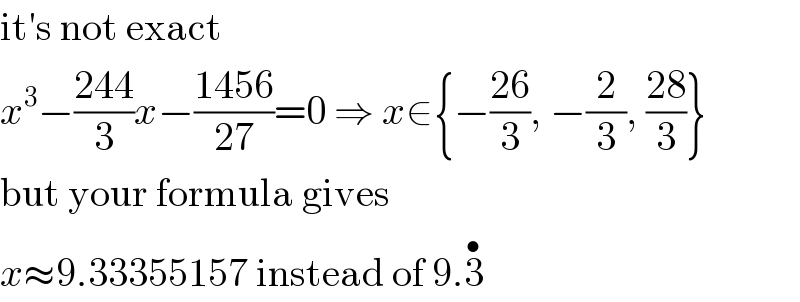
Question and Answers Forum
Question Number 114388 by ajfour last updated on 18/Sep/20
![Developed the formula for the cubic equation when it has three real roots and Cardano is just not suitable as discriminant gets negative.. Given x^3 −bx−c=0 with b>0 , c>0 (t/b)=1+((15)/2)((c^2 /b^3 ))+(√(((c^2 /b^3 ))[49−((75)/4)((c^2 /b^3 ))])) x=(√(t+((4c^2 )/b^2 ))) −((3c)/b) ★ mrW Sir, MjS Sir please check!](Q114388.png)
Commented byMJS_new last updated on 18/Sep/20

Commented byajfour last updated on 18/Sep/20

| ||
Question and Answers Forum | ||
Question Number 114388 by ajfour last updated on 18/Sep/20 | ||
![Developed the formula for the cubic equation when it has three real roots and Cardano is just not suitable as discriminant gets negative.. Given x^3 −bx−c=0 with b>0 , c>0 (t/b)=1+((15)/2)((c^2 /b^3 ))+(√(((c^2 /b^3 ))[49−((75)/4)((c^2 /b^3 ))])) x=(√(t+((4c^2 )/b^2 ))) −((3c)/b) ★ mrW Sir, MjS Sir please check!](Q114388.png) | ||
Commented byMJS_new last updated on 18/Sep/20 | ||
 | ||
Commented byajfour last updated on 18/Sep/20 | ||
 | ||